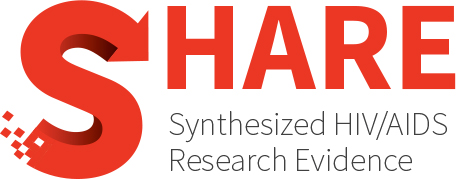Category Archives: Governance arrangements
How decisions about care are made
Restarting pre-exposure prophylaxis (PrEP) for HIV: A systematic review and meta-analysis
Background High coverage of pre-exposure prophylaxis (PrEP) will reduce HIV transmission and help end the HIV/AIDS pandemic. However, PrEP users face challenges, including long-term adherence. The study aimed to document...
A scoping review of the current landscape of pre-exposure prophylaxis and postexposure prophylaxis in India
This scoping review aimed to review and summarize the evidence related to the attitudes toward human immunodeficiency virus (HIV) pre-exposure prophylaxis (PrEP)/postexposure prophylaxis (PEP) among people at risk of HIV,...
Identifying best practices for increasing HIV pre-exposure prophylaxis (PrEP) use and persistence in the United States: A systematic review
A qualitative systematic review was conducted to evaluate pre-exposure prophylaxis (PrEP) interventions, describe characteristics of best practices for increasing PrEP use and persistence, and explore research gaps based on current...
Health-related quality of life in people with advanced HIV disease, from 1996 to 2021: Systematic review and meta-analysis
The purpose of the study was to assess the effects of advanced HIV disease (AHD) on health-related quality of life (HRQoL) in PLHIV, the changes in HRQoL outcomes over the...
Facilitators and barriers to adherence to anti-retroviral treatment among pregnant or breastfeeding women living with HIV and perinatally infected infants: A scoping review
In 2022, 54% of 1.5 million children (age 0-14) living with HIV had access to anti-retroviral medication (ART). Adherence to ART for pregnant or breastfeeding HIV + women is critical...
Fast-track interventions for HIV and AIDS epidemic control among key populations: A rapid review
BACKGROUND: Targeted interventions for key populations remain critical for realisation of epidemic control for human immunodeficiency virus (HIV) infection because of the causal relationship between HIV infection in the general...
Psychometric properties of stigma and discrimination measurement tools for persons living with HIV: A systematic review using the COSMIN methodology
BACKGROUND: The development of antiretroviral therapy broadly extends the life expectancy of persons living with HIV (PLHIV). However, stigma and discrimination are still great threat to these individuals and the...
HIV associated neurocognitive disorder screening and diagnosis pathways in Australia: A scoping review and international implications
Symptomatic HIV-associated neurocognitive disorder (HAND) is a complication of HIV (cognitive impairment, difficulties with everyday functioning). If detected early, interventions assist with optimizing care, avoiding rapid decline and enhancing coping....
A contextualization of transgender women and condom use using the HIV syndemic framework: Scoping review
Objective: To contextualize condom use in the transgender women population utilizing the HIV syndemic framework. Methods: Studies reporting condom use frequency and syndemic factors associated with HIV risk in transgender...
A community guide systematic review: Digital HIV pre-exposure prophylaxis interventions
INTRODUCTION: HIV preexposure prophylaxis (PrEP) is highly effective when taken as prescribed. Digital health adherence interventions have been identified as effective for improving antiretroviral therapy adherence among people with HIV,...
Providing anti-retroviral treatment did not achieve the ambition of ‘Joint united nations program on HIV/AIDS (UNAIDS) among HIV positive patient in Ethiopia’: A systematic review and meta-analysis
INTRODUCTION: Antiretroviral Treatment (ART) has great importance in reducing viral load. Though a global effort was made to suppress viral load, the level of viral load suppression among ART patients...
